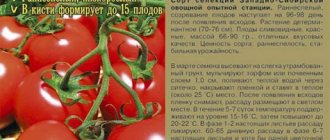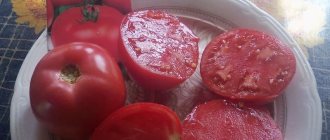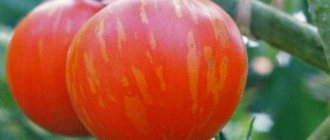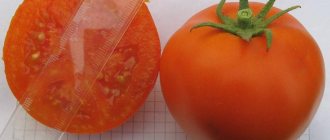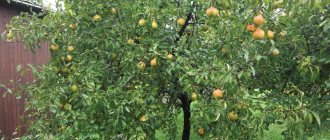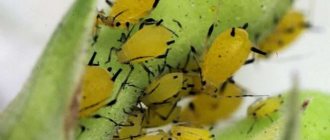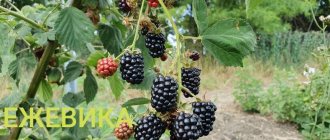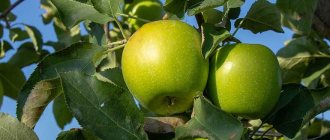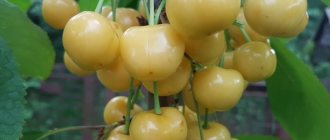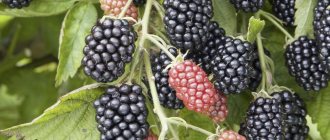Description of the variety
The ancient Russian variety got its name from a village in the Belgorod region. Cultivated mainly in the Central region of the country . In nearby areas it is often known by other names. Since 1943 it has been included in the State Register. It is grown on an industrial scale and in summer cottages.
Chemical composition, trace elements and vitamins, beneficial properties
People have been eating onions for several thousand years. Apart from its culinary uses, it is known for its medicinal properties.
This vegetable is rich in minerals, essential oils, phytoncides , organic acids, vitamins C, E, group B, and carotene.
With regular moderate consumption of onions:
- strengthens the immune system;
- reduces the risk of acute respiratory viral infections and acute respiratory infections;
- reduces sugar and cholesterol levels;
- keeps blood pressure normal;
- reduces the risk of atherosclerosis and thrombosis.
Onions cleanse the body of waste and toxins, remove heavy metals , and normalize intestinal function. Scientists have proven that onions contain substances that reduce the risk of prostate cancer. Phytoncides destroy bacteria and viruses and are especially useful in the autumn-winter period. Green onions contain chlorophyll, which strengthens the walls of blood vessels.
Vitamins are found not only in bulbs and green onions, but also in their peel . Teas and decoctions are prepared from it, useful for improving heart activity, having a diuretic, expectorant, and laxative effect. An infusion of the husk will relieve cramps in the limbs, make hair shiny, and slow down the aging process.
Attention! People suffering from diseases of the duodenum, stomach, and kidneys should take it in limited quantities and after heat treatment.
Ripening period
Strigunovsky local belongs to the early ripening varieties . From the emergence of seedlings to the lodging of the feather, 75-95 days pass.
Productivity
Productivity is high, depending on the region and weather. From 1.5 to 3 kg of onions are collected from 1 m² .
Disease resistance
The variety has high immunity to fungal diseases : fusarium, rust, mosaic. It is practically not attacked by harmful insects: nematodes, aphids, moths, spider mites.
Characteristics of the bulb, description of appearance, taste
The bulbs are light yellow, round, slightly elongated at the edges, medium-sized . Average weight – 50-80 g. The pulp is juicy, white, the taste is sharp. Strigunok is stored for a long time, until the new harvest. It is used both fresh and boiled, fried, stewed.
For which regions is it suitable and what are the climate requirements?
This variety can be grown throughout the country . It is recommended for breeding in northern regions, as it ripens before frost. In the southern regions a rich harvest of this variety is obtained.
Characteristics and description
The local onion variety Strigunovsky has been on the Russian State Register since 1943. It can be grown in all regions of the country. It is recommended to cultivate in a 2-year culture from the seeds obtained last year, but it can also be grown from seeds through seedlings in an annual culture. The variety is an early ripening variety; the period from seed germination to feather lodging is 77-98 days.
Description and characteristics of local Strigunovsky onion from the originator:
- the bulb is round in shape, with a slight slope to the top and bottom;
- cover scales are yellow with a grayish or pink tint;
- juicy scales - white, dense;
- rudiments – 2-4;
- The taste of the bulbs is sharp.
The yield of marketable heads of this variety is 1.18-3.27 kg per 1 sq. m with a weight of 1 head - 45-80 g. The ripening of the bulbs before harvesting is from 50 to 97% (this indicator is affected by weather conditions). The assembled heads withstand storage well.
The collected onions are suitable for use fresh and processed: these onions can be added to any dishes in which they are needed.
The main advantages and disadvantages of the variety
Strigunovsky local has an eighty-year history and has many advantages :
- early ripening;
- high productivity;
- long shelf life;
- high ripening of bulbs – 49-97%;
- cold resistance;
- unpretentiousness of cultivation;
- universal application;
- growing in a one- or two-year culture;
- possibility of widespread breeding.
Features of the variety : sharp, burning taste.
The disadvantage is that the bulbs are small when growing local Strigunovsky from seeds.
Onion Strigunovsky: description and characteristics of the variety
Brief description of Strigunovsky onion set:
- The onion variety Strigunovsky is a type of onion;
- It has from two to four nests for ripening planting material, this is the only disadvantage of this species (other varieties of this crop are multi-chambered, for example, Family Onion);
- Belongs to an early ripening species;
- You can grow both an annual crop from seeds and a biennial crop from sets;
- The shape is round, with edges extended up and down;
- The nature of the structure is dense;
Onion variety Strigunovsky
Features of planting and growing
Onions are unpretentious crops . But in order to get a good harvest, you must follow a number of rules and agricultural practices.
Preparing for landing
The area for planting is prepared in the fall : it is dug up, fertilizers, manure, and ash are added. The beds are made on the illuminated side, on a hill. In the spring, the area is dug up and loosened again.
Soil requirements
The soil should be light, loose, fertile . Pay attention to the plants that grew in the bed before the onions. The best predecessors: tomatoes, cabbage, legumes.
Dates, scheme and rules of planting
Planting times depend on:
- growing method;
- weather;
- region.
With the seedling method of planting, seeds are sown in greenhouses at the end of February in the southern regions; in Central Russia, planting begins in mid-March, in the north of the country - another month later.
The sprouts are transplanted into open ground at a soil temperature of +10…+15°C.
Onion sets are planted in open ground at the end of April , in the Volga region - in mid-May, and in the northern regions - in late May - early June.
Sets can also be grown before winter , before the onset of cold weather. The soil temperature should be around +5°C. In the south - in November, in the middle zone - in October, and in the north - from the beginning of September.
Seeds
Before planting, the seeds are checked for germination, soaked in a solution of potassium permanganate for half an hour, then growth stimulating agents are used, for example, Zircon.
The seed is dried and planted in special boxes . Seeds are planted into seedlings according to a 3x5 cm pattern, embedded 1 cm into the ground. The containers are covered with film or glass and placed in a warm room with a temperature above 23°C. With the emergence of seedlings, they are transferred to a cool, bright place. When the soil warms up and the seedlings are hardened, they are planted in open ground. The distance between the rows is up to 20 cm, between the roots - 7-10 cm.
For sowing in open ground, planting material is checked for germination , treated with potassium permanganate, and heated for about half an hour at a temperature of 50°C.
Reference. You can use aloe juice and growth stimulants by soaking the seeds for half an hour. The seeds are then dried.
Plant according to the 1x15 cm pattern , planted to a depth of 2 cm.
To make the seeds germinate faster, cover them with film . When the sprouts appear, the cover is removed.
Sevok
For sowing, bulbs with a diameter of 1-2 cm are used . They are warmed up several days before sowing and treated with fertilizer solutions or growth stimulants. For disinfection, use a solution of copper sulfate - 30 g per bucket of water. The sets are dried and planted at a distance of 10x20 cm. The bulbs are sealed so that the tops are visible from the ground. Plantings are watered and mulched with dry peat.
Pre-winter plantings are done with dry seedlings without treatment, planting material is planted to a depth of 4 cm and mulched.
Features of cultivation
Onions are a biennial crop . In the first year, sets are grown from seeds. The next year, the seedlings are planted and full-fledged bulbs are obtained.
To get a better harvest, use the seedling method .
The seedlings are thinned out when the first leaves appear . Seedlings should be 2 cm apart from each other. The second thinning is carried out with 4 feathers, planted at a distance of 6 cm.
Nuances of care
They care for Strigunovsky onions in the same way as other varieties . To get a large harvest, the soil is fertilized, watered, loosened, and weeds are controlled.
Watering mode
Water the onions about once a week, depending on the weather. During the dry season, the frequency of watering is increased . A month before harvesting, they stop watering the onions. After watering, the soil is loosened and weeded.
Loosening the soil, weeding
Care consists of frequent weeding and loosening of row spacing . Loosening retains moisture in the soil, provides air to the roots, and removes crusts on the surface of the earth after watering and rain.
Top dressing
With the appearance of feathers, you can begin feeding the crop. Fertilizers are applied 2-3 times per season, mineral and organic agents are used :
- The first feeding is done with a solution of nitrate or manure. The proportions are as follows: a box of saltpeter per 10 liters of water or 1:10 for a folk remedy. Use 3 liters per 1 m².
- The second feeding is carried out with a solution of “Nitroammophoska” - 2 tbsp. l. fertilizer in a bucket of water. The consumption is the same as in the first case.
- At the time of turnip formation, a mixture of fertilizers is used - 10 g of potassium sulfate, 1 glass of ash, 20 g of superphosphate per 1 m².
Disease and pest control
Strigunovsky is resistant to a number of fungal diseases and pests , but can be affected by powdery mildew, white rot, neck rot, and suffers from onion midge.
To combat flies, the beds are treated with Tabazol, pollinated with ash, and watered with a solution of potassium permanganate once a week. The onion fly cannot stand the smell of carrots, so planting it next to onion beds or alternating rows of carrots and onions gives good results.
When downy mildew appears , reduce watering of the plantings, use ash and sulfur solution - 60 g per bucket of water. Avoid fertilizing with nitrogen fertilizers.
To prevent downy mildew, Fitosporin-M and Ridomil Gold are used once every 20 days. Whey has proven itself well: it is diluted with water 1:10 and sprayed on the greens.
To prevent infection by various types of rot, fungicidal preparations are used.
Important! For prevention during the formation of heads, onions are treated with a solution of “Effecton” or copper sulfate.
Onion care
Growing Strigunka onions requires proper care for them: timely and regular watering and fertilizing, loosening the soil and removing weeds, and in case of damage by diseases or parasites, treatment with fungicidal or insecticidal preparations.
Watering and fertilizing
Watering for the crop is organized based on the fact that it should not dry out or suffer from excess moisture (in the first case, the feathers will become bluish-white, and in the second, the greens will become pale in color).
In view of this, weather conditions must be taken into account:
- if the weather is dry and hot in summer, then you need to moisten the onion once every 2 days;
- if it rains every other day, then additional watering will lead to an excess of moisture and rotting of the plants;
- under favorable weather conditions, the crop is watered, on average, once every 7 days, at the rate of 5–10 liters per 1 m²;
- During the ripening period of the crop (July), watering should be reduced.
In order for the greenery of onions to grow faster, it is necessary to fertilize the crop according to the following scheme:
- They use organic matter - 250 ml of urea (or bird or cow droppings) + 10 liters of water; add 3 liters of solution per 1 m².
- After 14 days, fertilizing is repeated.
- When the bulbs reach the size of a walnut, a third feeding is carried out (the same recipe).
Important! The first feeding of onions is carried out in the growth phase of greenery.
Loosening the soil and weeding
Caring for onions involves repeated loosening of row spacing and manual weeding of weeds in the rows.
Loosening provides:
- cleanliness of plantings;
- maintaining moisture in the ground;
- good aeration;
- removal of soil crust after rain;
- improvement of nutritional and thermal regimes.
Loosening is carried out the next day after moistening the soil, trying to carefully cultivate the rows without damaging the plants or covering them with soil.
Plant pests and diseases
Although the Strigunovsky onion variety is resistant to diseases and insect attacks, if not properly cared for, it can be susceptible to these problems.
Some diseases that affect onions:
- White rot . It can develop if the site has acidic soil that has not been limed, as well as soil with excess nitrogen. Affected specimens must be removed from the beds. Before storage, the harvested crop is sprinkled with chalk for preventive purposes.
- Gray rot. Caused by a fungus that actively spreads in damp and rainy weather and with excessive watering. Diseased products are removed. As preventive measures, it is necessary to strictly follow the agricultural practices of the crop, and in the spring, treat the onions with copper sulfate.
Read in more detail why onions rot in the garden and how to prevent it.
- Jaundice . A viral infection that deforms flowers and forms chlorotic spotting on feathers. The viral disease cannot be treated, and if symptoms are detected, then all diseased plants are immediately removed from the site, and the crop beds and row spacing are kept free of weeds. Proper crop rotation serves as prevention.
- Fusarium . A fungal disease that affects onions during hot periods. The disease can be spread by the onion fly. Due to the disease, rotting and tissue death develops, which is manifested by yellowing of the tips of the leaves. For prevention purposes, the seed material is heated before sowing.
Insect pests dangerous to onions:
- Secretive proboscis . The parasite is destroyed using systemic insecticides (Nurell D, Pirinex Super, Newstar, Nurimet Extra).
- Onion moth . Pest control and prevention involve the timely removal of weeds from the site, and at the end of the growing season of the crop - all plant residues. Compliance with agrotechnical rules and crop rotation is also important.
- Onion fly . The pest cannot tolerate the smell of carrots, so it is advisable to alternate onion plantings with rows of carrot plantings.
- Sprout fly . Deep pre-winter digging of the land will help destroy the larvae of harmful insects.
- Medvedka . The pest can be lured with traps: dig holes 0.5 m deep in several places in the garden, lay horse manure on the bottom and cover with wooden shields. When mole crickets gather to bask, they are removed and destroyed.
- Armyworm (winter, cabbage, garden). Parasitic caterpillars can be destroyed by treating plantings with solutions of “Bitoxibacillin” (1%) or “Gomelin” (0.5%).
- Tobacco thrips . The tiny harmful insect is eliminated by treating the plantings with Actellik and Karbofos (0.15%).
Harvest and storage
Strigunok matures in about 3 months . If the tops lay down, begin to dry, or turn yellow, it’s time to start cleaning.
How and when to collect
If necessary, the maturation of the crop is accelerated . To do this, the greens are broken off within two weeks.
Harvest the bulbs in dry weather. You can use a fork or pull it out with your hands. The harvested crop is then dried in the shade for about two weeks.
Storage features, keeping quality of the variety
After drying, the onions are sorted and sorted . Trim the dried feather to a height of 7-10 cm. Store in a dry, well-ventilated area at a temperature of 18-20°C. In houses, pantries and kitchens are suitable for this purpose. The bulbs are placed in nets or paper bags. You can use the folk method - weave an onion braid and hang it on the wall. Strigunovsky lies well and retains its properties until the next harvest.
Sevok is stored at +10°C and humidity 75% in a well-ventilated area.
Pest control and prevention
Among the diseases and pests dangerous to Strigunovsky onions are:
- Downy mildew.
- White rot.
- Onion flies.
- Cervical rot.
- To combat onion flies, plantings are treated with Tabazol, Sochva, and Zemlin. It is recommended to periodically pollinate the plots with wood ash. Once every 10 days, the beds are watered with a solution of potassium permanganate.
- When affected by downy mildew, crops are treated with a sulfur solution (50–80 g per 10 liters of water), watering is reduced, the beds are pollinated with ash, and the introduction of nitrogen-containing substances is avoided. To prevent downy mildew, the crop areas are treated with Fitosporin-M once every 3 weeks.
- To combat neck rot, fungicidal preparations are used: “Benlat”, “Tigam”, “Fundazol”. During the period of turnip formation, the beds are watered with “Effecton”. Foliar treatment of crops is carried out with a solution of copper sulfate.
- White rot of onions can be effectively eliminated by treating with fungicidal agents. As preventive measures against pests and diseases, it is necessary to take into account crop rotation, planting technology, watering rates, promptly loosen, clean, weed the beds, harvest and store it correctly.
A truly time-tested variety of onions, “Strigunovsky,” is excellent for growing in the harsh conditions of northern latitudes. But even in a mild climate, with proper agricultural technology, you can harvest a high-quality harvest. Very sharp taste, high degree of preservation, excellent marketability - arguments for planting vegetables both in households and on an industrial scale.
If you find an error, please select a piece of text and press Ctrl+Enter.
What difficulties may there be when growing
You can't go wrong with the planting dates . If in early spring the onions were planted late, in well-warmed soil, there will not be a full turnip harvest. Due to the large amount of greens, the bulbs will be small.
If you were in a hurry with planting, then the seedlings and seedlings may suffer from frost . The first shoots should appear a week after sowing. In rainy weather, onion plantings are affected by fungal diseases.
Basic Rules
Landing
Seeds
Growing this onion from seeds with seedlings has a number of features:
- The planting material is checked for germination, then soaked in a solution of potassium permanganate (1%) for 30 minutes for disinfection, treated with means to stimulate growth, for example, use “Ekopin” or “Zircon” (according to the instructions).
- The seeds are dried, sown in special containers, you can use cassettes with cells, then 2-3 grains are placed in each hole. The soil should be fertile, loose, and well absorbing moisture. Grooves are formed, the space between the holes is 3 cm, in the rows - 5 cm. The depth of planting the seeds is 1 cm. The boxes are covered with film and left warm (at +25 degrees).
- With the appearance of sprouts, the containers are moved to a slightly cooler, bright place (from +17 to +20 degrees). After hardening, the seedlings are transplanted into open beds. In this case, the grooves are formed at a distance of 20 cm between the rows, retreating between the holes by 5 cm.
- Nigella seeds for sowing immediately in open ground are treated with a solution of potassium permanganate, fungicidal preparations, heated in the oven for about half an hour (at 50 degrees), soaked in aloe juice for 40 minutes, dried, and mixed with chalk for a free-flowing consistency so that it can be seen in the soil.
- Nigella is planted in the furrows using a strip method with a distance between holes of 1 cm and a space between rows of 14–20 cm. The depth of sowing is from 2 to 3 cm. The seeds are compacted with soil, and the plantings are mulched with peat.
Advice from experienced gardeners
To increase productivity, experienced gardeners advise:
- Choose a place for onion beds in advance. Pay attention to the ground. If the soil is clayey, add a mixture of peat and sand. If the soil in the area is acidic, add dolomite flour to deacidify. Carry out all operations in the fall.
- Before planting, keep the seedlings for about three hours in a saline solution (1 tablespoon per 1 liter of water), rinse, then immerse in a solution of potassium permanganate for 2 hours.
- Trim the tops of bulbs before planting to promote rapid plant growth.
- When planting, sprinkle a little salt between the rows and you will save young seedlings from onion flies.
- Do not use fresh manure or compost for onions.
- When the first feathers appear, the onions are watered in the following way: first with water, then with ammonia solution (2 tablespoons per bucket of water). The next day, regular watering. Repeat after ten days. Using the same scheme, you can water with ordinary salt (30 g per 1 liter of water) and a solution of potassium permanganate. These products will help prevent onion midges.
- You can feed the onions with yeast. After watering, use a yeast solution - 100 g of yeast per bucket of water, let it brew for 3 hours.
Features of cultivation
“Strigunovsky” onions are usually harvested in late summer - early autumn.
To increase productivity, it is worth following some planting and care rules.
- The soil should be well fertilized and loosened.
- The location of the culture should be well lit. To ripen, the bulbs need long daylight hours (up to 17 hours). Therefore, do not choose areas under the shade of large trees or bushes.
- Frequent watering is beneficial during the plant's germination (that is, when the green feathers appear). Then you need to reduce the amount of watering so that the fruit dries well and does not rot.
- Regular weeding is required. If the bulbs grow close to each other, they will interfere with their “neighbors” and will not be able to increase in size. Therefore, weak or damaged shoots need to be removed to increase space for healthy plants.
- If you plant annual onions, then change the location on the site each time. This is useful for any type of plant. This way the crop will not get sick, and the yield will always be at a high level.
The main thing in working with this crop is not to miscalculate the planting time, otherwise the fruit will not have time to ripen. Usually this is the end of April, but you need to take into account the climate in your region. Onions grow from 2.5 to 3 months (this is the period of massive growth).
Reviews of the onion variety Strigunovsky local
Reviews from gardeners describing the Strigunovsky variety are only positive.
Stas, Moscow region : “I have been growing Strigunovsky for many years and will not give up this variety. I like that it ripens early and has compact heads, as in the photo on the Internet. I love its spiciness, which is great for salads and other dishes. Stored until July."
Zhenya, Voronezh region : “I advise all gardeners to grow this variety. I tried growing many varieties and settled on this one. It grows quickly, forms bulbs quickly. Unpretentious, tasty. The bulbs are larger and less sharp than Bessonovsky. With a harvest any year.”
Andrey, Chelyabinsk : “Germination is good. Keeps for a long time. Can be used for onions and as sets. I advise everyone. You can't go wrong."
Agrotechnics of cultivation
Soil preparation
It is necessary that the land plot is well lit. The soil should be completely ready for sowing by the end of April, the exact time cannot be determined, much depends on the region and weather conditions. For this purpose, preparations have been carried out since the fall. The soil is dug up, cleared of weeds and fertilized with compost or rotted cow manure.
Important! If the soil is highly acidic, it is treated with lime or wood ash. Ash per 1 sq. meter of area is used 300-400 grams. Before planting, the soil must be loosened and moistened.
Seed preparation
Growing seeds in open ground takes a long time. To speed up the germination process, they are prepared in advance. The process includes the following manipulations:
- four days before planting, the seeds are poured into a saucer and filled with room water for soaking;
- then they are poured halfway into a special bag, tied tightly and again immersed in water for thirty to thirty-five hours (the water must be changed 4 times during this time);
- the swollen seeds are scattered onto a damp cloth in a thin layer and covered with the same cloth on top;
- The raw materials are left for several days in a warm place, and on the third day the sprouts will hatch.
Self-collected planting material must be disinfected with fungicidal preparations. As a treatment against parasites, you can use a solution of potassium permanganate. Then the raw materials are heated in an oven for about half an hour at a temperature of 50 degrees. At the end, the seeds are kept for forty minutes in aloe juice. The nigella is dried to obtain a free-flowing consistency and mixed with chalk, this will allow it to be better seen in the soil.
Preparing onion sets
The seedlings are sorted and divided according to shape and size. Rotten sets are thrown away.
In three days, the onion heads warm up. If they were stored at home, then this is not necessary. If you refuse to warm up, the vegetable will quickly shoot arrows, and the harvest will be small.
After warming up, the seedlings are soaked in a complex solution (a tablespoon of any agricultural fertilizer per 10 liters of water). The procedure lasts 10 hours. Now the onions are dipped into another solution; to prepare it you will need a bucket of water and a small spoon of copper sulfate. The seedlings are soaked for 15 minutes. The heads are thoroughly washed at the end of the procedure.
Important! For a large harvest, do not cut off the top of the set. If a gardener wants to propagate this variety, the top is cut off.
Landing
The first method is planting seeds (carried out at the end of April).
The nigella is laid out in the ground in a strip pattern, the distance between the holes is 1 cm, the depth is 2-3 centimeters. The seed is compacted and sprinkled with soil to remove the air layer. Now the soil is mulched with peat, watered and covered with film until the first greenery appears.
Planting onion sets in open ground
The second option is bulb sowing. Sowing is carried out in warm winters or early spring (soil temperature not lower than 12 degrees). Sow the bulbs using the one-line method. The distance between the rows is 40 centimeters, between the grooves - from 4 to 6 cm. The depth of the hole depends on the shape and size of the set. The main thing is that the tip sticks out slightly from the ground.
Planting Onion Seeds
The first shoots appear on the ninth, maximum twelfth day. It is necessary to constantly eliminate weeds and crusting on the soil. Loosening of the soil is carried out carefully, superficially, no more than 10 centimeters in depth, otherwise the roots of the head can be damaged.
Additional Information. For high yields, small heads are planted in the ground 5 cm deep. The neck cannot be cut. To obtain feathers, large sets are selected and planted in frequent rows. The set is sprinkled with earth.
To learn more about the rules of planting and the features of this onion, you can study the research project, where everything is described in detail.
This includes:
- watering;
- loosening, thinning and weeding;
- feeding with minerals.
Watering
The procedure is performed once or twice a week, if the ground is dry and there has been no rain. This irrigation procedure is carried out only during the growing season, which lasts from May to June. When the vegetable ripens, watering stops. After each watering, weeding is necessary, thanks to which the earth will be saturated with oxygen and weeds will be eliminated.
Thinning
When the first leaves appear, the first thinning is carried out. If the distance between the holes is less than two centimeters, the excess bow is pulled out. The next time the same manipulation is carried out after the formation of the 4th leaf, now the distance between the grooves is from 4 to 6 cm.
Top dressing
Important! When the greenery grows, this is a signal for the first feeding.
A solution made from urea is ideal as a fertilizer. To prepare it you will need 10 liters of water and 25 grams of product. The finished fertilizer is poured under the root system, 10 liters are distributed over no more than 10 linear meters.
The second stage of soil fertilization is carried out at the end of June, approximately three weeks after the first fertilization. In this case, potassium and phosphate compounds are used. The proportion is 13 grams of potassium per 30 grams of phosphate.
Watering and fertilizing onions
Harvesting
The ripening phase is determined by the foliage. When it turns yellow and sinks to the ground, it means the bulb is fully ripe. Collection is carried out in dry weather. After being removed from the soil, the vegetable is stored and dried under a canopy for ten days.
Rules of care
Caring for the Strigunovsky onion variety is no different from caring for other varieties.
Watering
Produced approximately once every seven days depending on weather conditions . If the period is dry, then there is a need to increase the frequency of watering. After the procedure, the soil must be loosened and weeded.
A month before harvesting, you should stop watering the vegetable crop.
Top dressing
You can start feeding after the feathers appear. It is necessary to use mineral and organic agents for fertilization, and they should be applied two to three times per season.
- For the first feeding, organic matter is used: mix 10 liters of water and 250 milliliters of urea.
3 liters of solution are required per 1 square meter. - After 2 weeks, fertilizing should be repeated.
- When the size of the bulb is similar to a walnut, it makes sense to carry out a third feeding identical to the first two.
Thermal and light conditions
Almost all varieties of onions are not very demanding on lighting, Strigunovsky was no exception. However, one of the main factors determining plant development, high yield and growth activity is natural sunlight. Therefore, it is better to choose sunny places on the site that are not obscured by trees or buildings .
If seedling cassettes are used for planting, they should be in a warm place with a temperature of +20...+25 °C.
Important! The crops are moistened with a spray bottle and covered with film to prevent moisture evaporation.
After the emergence of seedlings, the boxes must be moved to a cool but bright place with a temperature of +16...+20 °C. When planting in open ground, the temperature should not fall below +13 degrees.
Do I need to trim?
Trimming onions for harvesting for the winter has only practical meaning. The crop can be folded more compactly and looks neater.
According to the pruning rules, the feather must be cut only from a dried turnip, otherwise the cut will become a breeding ground for bacteria. Through the “entrance gate” they enter the vegetable.
Varieties of onions
Depending on the conditions and area of growth, varieties can be divided into 2 large groups:
Onion varieties intended for areas with cold climates have a pronounced pungent taste and excellent keeping quality. Onions grown in the southern regions have a sweeter taste, but do not last long. Southern - mainly salad types of onions.
White onions are also widely used. It has a sweetish, delicate taste. Also applies to salad types. Disadvantage: short shelf life and instability to diseases and pests.
Types and varieties of onions
Onion greens should be present on our table every day. Many gardeners, in order to get vitamins, plant turnips on a feather, but the greens of perennial onion varieties have a milder taste and contain more vitamins. Moreover, the feather appears in early spring, when the body really needs nutrients.
Onion
April
Valdai
Tokyo
Tenderness
Chives
Slime Bow
Green Banner F 1
Ferapont
Leek
Goliath
Bastion
Mercury
It doesn't matter which variety you grow for medicinal purposes, all are good. When choosing a variety, it is important to pay attention to such characteristics as zoning and ripening time, and if you are growing it for commercial purposes, then it is a good idea to pay attention to its presentation and the possibility of long-term storage.
How to grow Strigunovsky onions?
For the best results in the fall, during planting the following rules must be observed:
- The soil should be sufficiently loose and rich in nutrients.
- A well-lit area is selected for the longest daylight hours for the crop.
The bed should be watered intensively only during the period of growth of the feather and ovary of the bulb. During the growth period of the bulb, watering must be reduced so that full ripening occurs within the planned period, and the onion is well stored.
- Regular weeding of the beds is strictly necessary.
- Every year, the location of the onion bed in the garden should change.
It is also necessary to take into account the timing of planting and carefully calculate them, otherwise low yields are inevitable.
You need to not miss the moment when the soil is ready, approximately the end of April, but the exact time depends on weather conditions and the growing region. It is advisable to take seeds that are a year old in order to achieve maximum germination, which must be checked before sowing.
Preparation and testing
To check the percentage of suitable seeds, you need to wet the cloth and place the seeds between its wet layers. The resulting structure should be placed in a warm place.
After the sprouts appear, preparation begins directly for sowing, which primarily consists of treating the seeds against fungal diseases with special disinfectants. Then you need to keep them in warm water (45-50°C) for half an hour, and then place them in aloe juice for the same time.
Sown beds will not quickly produce green sprouts. To speed up this process, you can soak nigella (seeds) in slightly warm water for several days before planting. The water should be changed regularly.
To prevent the seeds from floating, they are placed in a cloth bag. Afterwards, the extracted nigella must be subjected to a germination test procedure. To make it clear where the area of the bed has already been sown, onion seeds are mixed with chalk.
Sowing and care
If the soil is dense, then you need to give it a loose structure. This is necessary to make it easier for the sprout to break out. It is recommended to sow nigella in rows equal to 1 m. The grooves should have a depth of no more than 2cm.
The seeds are laid out in the soil one at a time at a distance of about 1 cm, this must be strictly observed, then you will get an ideal set. If the distance is greater, it will grow large, due to which the necessary stage of ripening after harvesting will not occur. If the distance is less than 1 cm, then the harvest will be small. This root crop is poorly stored, and its germination begins long before its due date.
At the last stage of planting, the crop is covered with soil and slightly compacted, avoiding air gaps, then the soil is mulched with humus or peat in a small layer. After these procedures, the onion is watered and covered with film until the first sprouts. After greenery appears, the film is removed.
When caring for the seedlings, it is necessary to prevent the formation of a crust on the ground and the appearance of weeds, which can reduce the yield by half.
To avoid removing the weeds that have sprouted before the crop, you need to place lettuce or radishes in the furrows along with the onions. They germinate earlier, and from them it will be possible to determine exactly where the rows are located. After the greenery of the bulbs appears, the “beacons” can be pulled out.
Watering is carried out every 3-7 days in the first half of the growing season, after which it must be stopped so as not to spoil the fruit. 6-7 days before harvesting, foliar feeding of the fruits is carried out for better ripening.
When is it planted in different regions?
The timing of sowing depends on the method of cultivation, the climate of the cultivation region, and weather conditions. In the south, planting seeds for seedlings begins at the end of February; for the Moscow region and the central zone, seasonal work begins in mid-March; for the northern regions, the dates are shifted to early April.
The strengthened sprouts are transplanted into open ground when the soil warms up to +10 degrees. In this case, planting onion crops begins:
- from the end of April - in the south;
- from mid-May - in the central zone and areas of the Moscow region;
- from the end of May - in Siberia and the Urals.
Advice
Seeds can be immediately planted in open ground when the soil layer warms up from +10 to +13 degrees. In the south, work begins at the end of April, in mid-latitudes - from mid-May, in the northern regions - only at the end of spring.
In the southern regions, spring planting of onion sets is carried out from the end of April; for the Moscow region and middle latitudes, sowing is best done from mid-May, and in the North - from late spring or early June.
Before winter, the seedlings are planted before the onset of severe cold, the optimal condition is the temperature of the soil layer is about +5 degrees. Such plantings in the south begin in November, in the middle latitudes and Moscow region - from the end of September - in October, for Siberia and the Urals the dates shift depending on the weather to approximately the beginning - mid-September.
